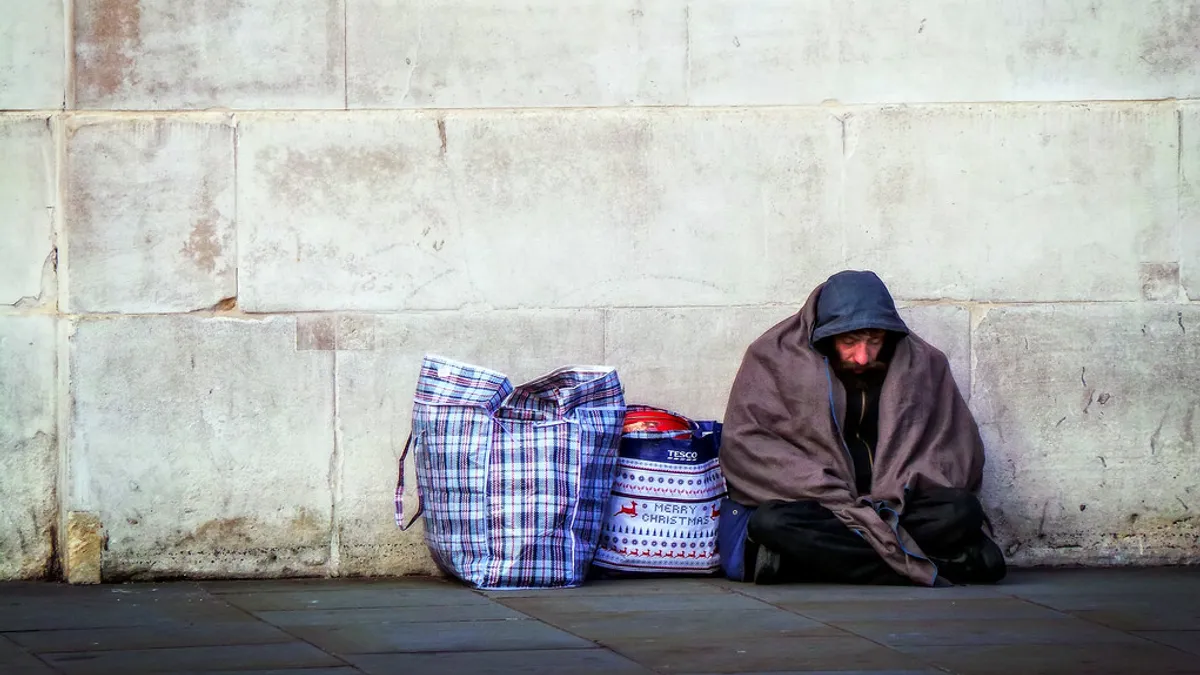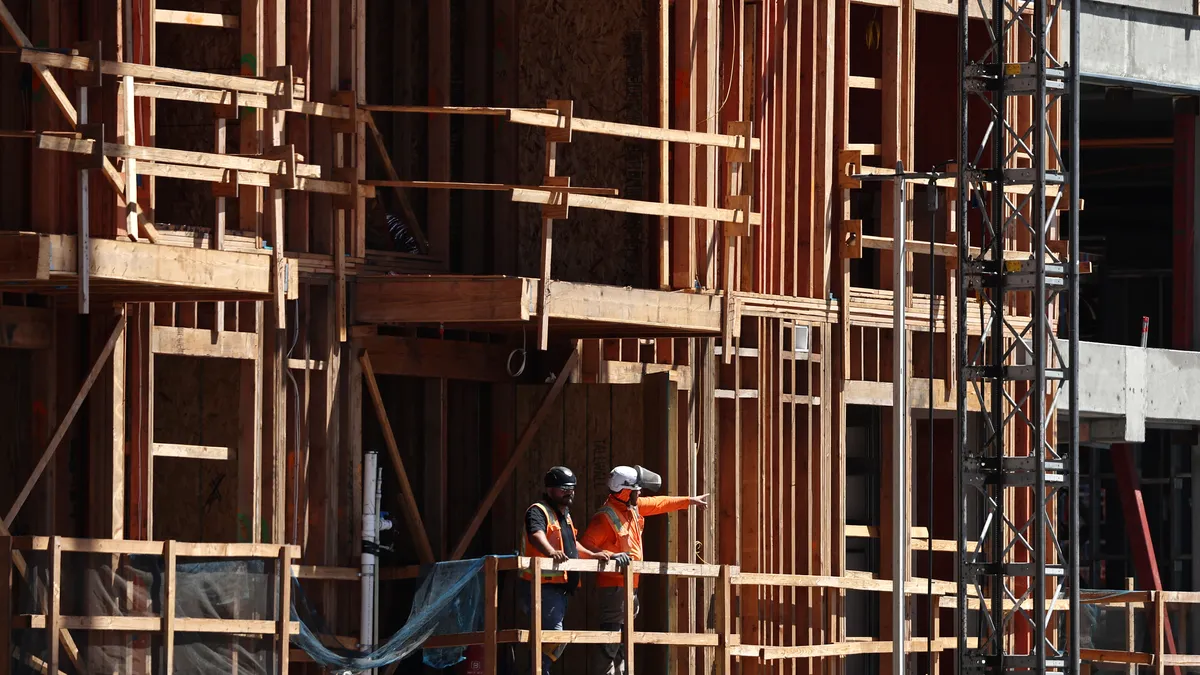When envisioning a "smart city" of the future, it's hard to imagine a street of driverless cars, LEED platinum buildings and homeless men and women occupying the sidewalks between the two. Yet that vision is a complex reality for cities of all sizes — and the problem is in dire need of a long-term fix.
In decades past, attempted solutions to combat homelessness largely involved opening a shelter to get people off the street. But municipalities and their partners now are delving deeper into different approaches to the problem — including incorporating technological innovations — to get to the root homelessness and reduce the number of people who experience it.
According to the U.S. Department of Housing and Urban Development (HUD), there are nearly 550,000 people experiencing homelessness in the United States. From 2015 to 2016, the number of people staying in shelters decreased by 5%, but the number of people staying in unsheltered locations increased by 2%. Although HUD notes a 15% overall decline in homelessness between 2007 and 2016, the issue is still prevalent and cities continue seeking ways to further drop the number.
More municipalities are adopting a holistic approach — known as a services-based system — and shying away from traditional solutions that only offer shelter — known as a facility-based system. Holistic approaches attempt to address the causes of homelessness such as substance abuse, joblessness or inadequate mental health care. Plus, they recognize each person as an individual with different needs rather than treating homelessness as a monolithic issue. Cities using service-based systems rather than facility-based systems find success with many residents becoming more self-sustaining and staying in shelters for a shorter period of time.
HUD cites the Washington, D.C. region as one experiencing an increase in homelessness while many parts of the country are experiencing a decline. D.C. suburb Arlington, VA opened a new homeless shelter two years ago that utilizes a holistic approach. "We’ve learned that homelessness is not a stand-alone issue," said Kurt Larrick, assistant director of communications and public engagement for the Arlington County Department of Human Services. "You have to address the entirety of a household’s challenges and barriers and always work with their strengths. That’s when you can make a meaningful difference and achieve housing stability."
He explained that just as there are many factors that contribute to someone becoming homeless, many things must be addressed for someone to achieve stable housing. "Certainly, getting that family or person housed is a great start," Larrick said. "But if you do that without addressing the employment issues, without connecting them to housing and child care subsidies and other benefits, without getting them to a doctor or therapist, without getting them some help with budgeting and financial planning, it probably isn’t going to last."
"You have to address the entirety of a household’s challenges and barriers and always work with their strengths. That’s when you can make a meaningful difference and achieve housing stability."

Kurt Larrick
Assistant Director of Communications, Arlington County Department of Human Services
Portland, ME is another example of a city embracing a holistic approach. Leaders there are examining where to construct a new, larger homeless shelter with on-site health and social services. The city also has other options for addressing homelessness, such as an apartment complex that opened earlier this month. It's the third apartment complex in the city where people experiencing homelessness have their own rooms with doors. That design creates a better sense of privacy and normalcy, and residents do not have to move their belongings with them into and out of a shelter every day.
Apartments are one form of the "housing first" approach, which also has led to the spread of tiny houses for the homeless. This method helps people who are homeless to quickly move into and stay in permanent housing. It typically involves providing services and short-term assistance without preconditions such as employment, sobriety or the lack of a criminal record. A common practice in housing first approaches is to provide rental assistance based on what a person can pay rather than supplying completely free housing. That embraces the fact that about 40% of people experiencing homelessness have some income, while combating the widely-held misconception that all homeless people are unemployed.
Although innovative ideas related to homelessness and shelters abound, funding for new tools remains a challenge. For example, when a funding partner asked if the Women in Need (WIN) shelters in New York had Wi-Fi, "We actually burst into hilarious laughter," said WIN CEO Christine Quinn. "That's so important, so needed and literally nowhere on the radar." She added that despite WIN's holistic efforts to get families back on their feet, "What doesn't exist is connectivity in our shelters for our clients. We're working so hard to help our children to do as well as they can in school. We're working hard with moms to get a job. But if nobody can be doing their work in their rooms, that is very confusing and not productive."
As usual @BNPParibas #Changenators brought the fun with #timecapsules, #artsandcrafts, #writing, & #literacy! #changenators #volunteersrock pic.twitter.com/QuSqYLhxqS
— Win (@WINNYC_ORG) September 27, 2017
Achieving Wi-Fi access for residents is one of the ultimate goals of WIN's project partnership with the NYU Center for Urban Science and Progress (CUSP). Their project uses data technology to create a "smart shelter" and reduce instances of homelessness. "We house about 10% of homeless families in New York City, which means we have a lot of data and what we see is statistically significant," Quinn said. WIN wants to use those statistics to analyze which efforts are proving effective and which are not. "We need to know what's working [or else] we can't do the best job," she said. "If we don't know when we're hitting the nail on the head, then how are we ever going to live up to the goal of breaking the cycle of homelessness?"
Part of the plan involves using a system of predictive analytics for facilities maintenance and operational efficiencies. The information will allow administrators to know, for example, how frequently to update HVAC systems or how to meet extermination needs more cost effectively at all of WIN's shelters. "That creates a better environment for our families and a less chaotic environment for us as management," Quinn said.
Another large piece is using solid predictive models to assess family outcomes and reduce their likelihood of returning to a shelter. "We need a roadmap to get technology into the shelter design, both for client and staff needs," Quinn said. "Data often drive policy makers' actions," and presenting hard statistics is a successful way to secure additional funding. "And we need to use technology and data to do better case evaluations... Part of this is also going to be getting the city to share more data with groups like WIN," Quinn said.
This summer, the city itself tapped into the growing open data trend when it launched the StreetSmart app. The tool allows the estimated 400 homelessness outreach workers in all of New York's five boroughs to communicate better and log data in real-time from the field. Previously, many of the outreach workers kept their own files. The new database is designed to share information about individual homeless people and their needs. It's a service-based system that acknowledges people's mobility throughout the region and the ineffectiveness of a system that can't track, for example, if a person received shelter and services in Manhattan one week, and then in the Bronx the next. Salt Lake City recently announced a similar connectivity and database plan.
Outreach workers view expanded uses of data, technology and system integration as the future of advancing homelessness mitigation programs by better identifying best practices. "Otherwise, in a very good, caring, generous way, we're all throwing a bit of spaghetti against the wall. And that's simply not what these [people experiencing homelessness] need or deserve," Quinn said.



















